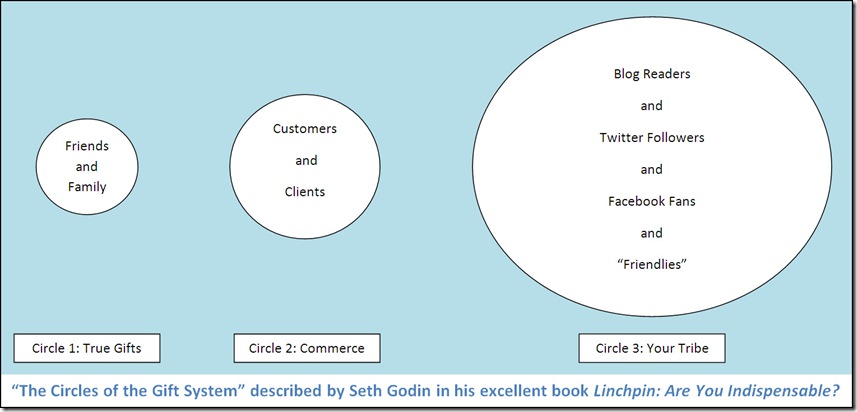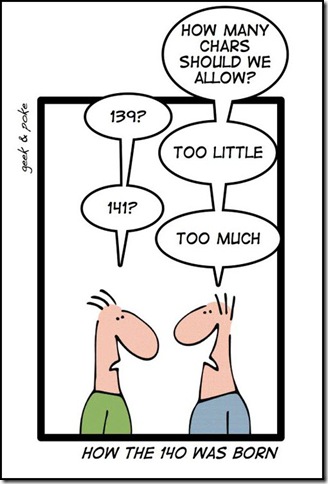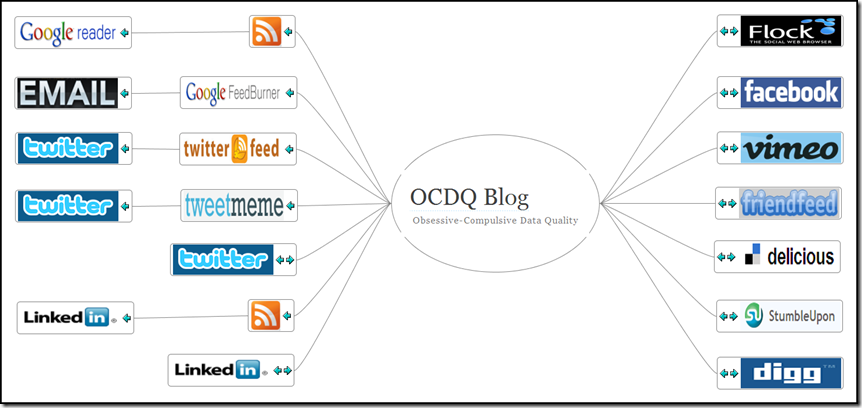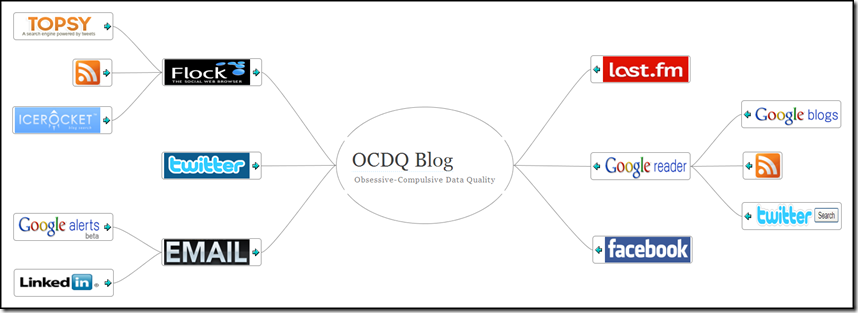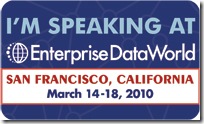In Part 3 of this series: We discussed the basics of developing your social media strategy by first examining the benefits of establishing a blog (or company website) as your social media base of operations for effective online community participation.
In Part 4, we will continue this discussion by reviewing some recommended blogging best practices and general guidelines for creating useful content in your own unique blogging style.
And that's the way it is (not anymore)
“And that's the way it is” was the trademark phrase Walter Cronkite used to conclude almost every one of his CBS Evening News television broadcasts. The only exceptions (when he omitted his trademark phrase) were if he instead concluded the broadcast by sharing either his opinion about or his commentary on a particular event in the news.
As I have stated many times throughout this series, social media is a conversation medium and not a broadcast medium.
Blogging, especially when effectively serving as your base of operations for effective online community participation, can be one of the most powerful aspects of social media. When done well, it facilities effective communication by acting as the catalyst that gets the conversation started, and when necessary, helps continue the discussion.
Simply broadcasting your (especially sales and marketing) message is not the way it is anymore.
What are you going to blog about?
Alright, I have probably annoyed you enough with the “social media is about starting a conversation” speech.
So what, exactly, are you going to start a conversation about? In other words, what are you going to blog about?
(And don't say you, your company or its products and services—you don't want to listen to the speech again, do you?)
If you have performed your social media preparation (Part 2) and you have been actively using your listening stations (Part 3), then you should already know the answer—whatever your online community is already discussing.
What problems are people talking about? What challenging issues keep coming up? What are the hotly contested debates or deeply polarized topics? In short, what are the other members of the community passionate about?
How do you write effective blog posts?
Listening to the online community has provided insight into what to blog about. But how do you write effective blog posts?
I am sorry, but there is no simple formula.
Well okay—according to conventional blogging wisdom—maybe there is one simple formula:
B = U2C3
In other words, effective blog posts provide Useful and Unique content that is Clear, Concise, and Consumable.
The Two U's
The first aspect of conventional blogging wisdom is to follow the Two U's:
- Useful – Focus on your reader and provide them assistance with a specific problem
- Unique – Capture your reader's attention and share your perspective in your own voice
Blogging truly has to be all about the reader. If you write only for yourself, then you will also be your only reader.
Effective blogging often provides “infotainment” – a combination of information and entertainment that, when it's done well, can turn readers into raving fans. Just don't forget—your blog content has to be informative and entertaining to your readers.
One important aspect of being unique is writing effective titles. Most potential readers scan titles to determine if they will click and read more. There is a delicate balance between effective titles and “baiting” – which will only alienate potential readers.
If you write a compelling title that makes your readers click through to an interesting post, then “You Rock!” However, if you write a “Shock and Awe” title followed by “Aw Shucks” content, then “You Suck!”
Therefore, your blog content also has to be unique—your topic, position, voice, or a combination of all three.
The Three C's
The second aspect of conventional blogging wisdom is to follow the Three C’s:
- Clear – Get to the point and stay on point
- Concise – No longer than necessary
- Consumable – Formatted to be easily read on a computer screen
Clear blog posts typically have a single theme or one primary topic to communicate. Don't run off on tangents, especially ones not related to the point you are trying to make. If you have several legitimate sub-topics to cover, then consider creating a series.
Concise doesn't necessarily mean “write really short blog posts.” There is no specific word count to target. Being concise simply means taking out anything that doesn't need to be included. Editing is the hardest part of writing, but also the most important.
Consumable content is extremely essential when people are reading off of a computer screen.
Densely packed text attacks the eyes, which doesn't encourage anyone to keep reading.
Consumable blog posts effectively use techniques such as the following:
- Providing an introduction and/or a conclusion
- Using section headings (in a larger size or different font or both)
- Varying the lengths of both sentences and paragraphs
- Highlighting key words or phrases using bold or italics—but don't underline—people will think it's a link and click on it
- Making or summarizing keys points in a short sentence or a short paragraph
- Making or summarizing key points using numbered or bulleted lists
As a general rule, the longer (although still both clear and concise) the blog post, the more consumable you need to make it.
Your Blog, Your Voice
Back in early December, I recorded my thoughts about the importance of blogging in your own voice as a podcast:
You can also download this podcast (MP3 file) by clicking on this link: Your Blog, Your Voice
Some of the key points covered in this 15 minute podcast include:
- The easiest way to produce unique content is to let your blogging style reflect your personality
- Make your readers feel like they are having a conversation with a real person
- You should be personal but still professional when blogging in a business context
- Don't be afraid to express your opinion—even on subjects where it seems like “everything has already be said”
- Your opinion is unique—because it is your opinion
- An opinion—as long as it is respectfully given—is never wrong
- Consistency in both style and message is important, however it's okay to vary your style and/or change your opinion
- Try your best to communicate your thoughts clearly, but don't be overly concerned with being misunderstood
- Pay careful attention to the feedback you receive from readers, especially any constructive criticism they provide
- Ultimately, you are the only one who can truly decide what style will work best for your blog
Please don't become a zombie
The blogosphere has a real zombie problem—no, not that kind of zombie.
“Zombie” is a slang term used to describe a blog that has stopped publishing new posts. In other words, the blog has joined the Blogosphere of the Living Dead, which is comprised of blogs that still have a valid URL, but desperately crave new “Posts!”
Before you start blogging, follow the 20-10-5 plan:
- Brainstorm 20 high level ideas for blog posts
- Write 10 rough drafts based on those ideas
- Finish 5 ready to publish posts from those drafts
If you are unable to complete this simple plan, then seriously reconsider starting a blog.
When you start blogging, consider the following recommendations:
- Do not post more than once a week
- Maintain an editorial calendar and schedule your future posts
- Finish more ready to publish posts (you're good until Week 6 because of the 20-10-5 plan)
Yes, you will be tempted to start posting more than once a week. You will be eager to share your brilliance with the blogosphere.
Just like many new things, blogging is really fun—when it's new. However, let's run the numbers:
- Posting once a week = 52 blog posts a year
- Posting twice a week = 104 blog posts a year
- Posting five times a week (basically once every week day) = 260 blog posts a year
I am not trying to harsh your mellow. I am just saying that you need to pace yourself. You are trying to build and maintain an active presence within your online community.
Do I practice what I preach?
Check my archives. My blog was started in March 2009. I published 5-8 posts per month (1-2 posts per week) for each of the first five months. I then gradually increased my posting frequency. Later this week, I will publish my 100th blog post.
Conclusion
This series is about the art of effectively using social media in a business context. Although there are many practical aspects that I did not cover—such as choosing a blogging platform as one example—blogging is definitely more art than science.
Therefore, you are obviously free to ignore the recommended blogging best practices I explained above. However, I highly recommend that you first learn them and then try putting them into practice. After all, it's always more fun to break the rules when you actually know what the rules are.
In Part 5 of this series: We will continue discussing the basics of developing your social media strategy by reviewing some other recommended best practices and general guidelines for engaging your community—beyond the pages of your blog.
Related Posts
Social Karma (Part 1) – Series Introduction
Social Karma (Part 2) – Social Media Preparation
Social Karma (Part 3) – Listening Stations, Home Base, and Outposts
Social Karma (Part 5) – Connection, Engagement, and ROI Basics
Social Karma (Part 6) – Social Media Books
Social Karma (Part 7) – Twitter
The Mullet Blogging Manifesto
Collablogaunity
Brevity is the Soul of Social Media






